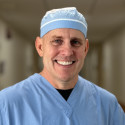What is a physician’s most important role? Is it to diagnose or to treat? In recent years, the rise of technology in medicine has called into question whether a physician’s responsibility is diagnosing and treating in equal measure. While the long-term impacts of novel medical technologies, like AI, remain to be seen, their development should encourage us to reflect on the current structure of diagnostics in medicine. The inherent rigidity and reductionist nature of our current diagnostic structure may be inadvertently limiting the progression of evidence-based medicine.
Forming a diagnosis is one of the skills we learn early on in our medical careers, as it is a craft that takes years to perfect. The word “diagnose” is the fusion of two distinct Latin words. One is ‘dia,’ which means apart, and ‘gignoskein,’ which roughly translates to recognize, or know.
In other words, diagnosis means the ability to recognize the distinctions in your knowledge. For example, night sweats, fevers, and weight loss are symptoms that may point to a different etiology than, say, jaw pain and ear infections. However, the development of modern medical science is, in part, a reflection of our ability to develop more advanced diagnostic tools or ways to find these distinctions between disease states. While this is hugely beneficial, relying excessively on a fixed diagnostic structure may hinder our ability to accommodate changes in our knowledge and reconfigure the schemas through which we understand pathology.
There is no doubt that diagnostics help us to maintain a sense of organization in medicine, however, utilization of this somewhat narrow approach can come at the expense of the more fluid nature in which medicine is practiced. An overreliance on specific diagnostic criteria may render us unable to step back and see the bigger picture of the patient’s health, perhaps undermining our ability to provide optimal patient care. For instance, in patients who come in for disturbed sleep and recurrent ear pain, we may be more inclined to prematurely conclude a patient has otitis media. After all, they have the classic constellation of symptoms. But if we step away from the diagnostics for a minute and look at the larger galaxy of health history that is before us (the patient is a stressed-out student and suffers from allergies) we might be able to reach a different conclusion and see that it was TMJ all along. There is something to be said about how we learn how to diagnose early on in our medical training. Initially, we learn diagnoses in silos corresponding to the system we are studying. This makes it tempting to fixate on certain diagnoses and fall into the habit of “tunnel vision." But perhaps what separates a “good” physician from a “great” physician is a willingness to confront one’s own diagnostic blind spots.
The utility of diagnoses largely lies in their heuristic value. Diagnoses offer doctors a framework for treating the patient and provide a succinct way of educating the patient about their body’s dysfunction. For this reason, many patients find receiving a diagnosis to be a relief. However, for other patients, a diagnosis can be taken as a label. “I have schizophrenia” becomes “I am schizophrenic,” and this can radically transform not only how the patient views themselves, but also how they are treated by clinicians down the line.
In addition, diagnoses have the power to unconsciously shape our understanding and practice of medicine. When we think of a BMI of 25 as overweight, we may fail to take adequate preventive measures in an Asian patient who has a BMI of 23 and an upward trend in their A1C. We also cannot discount the forces that shape diagnostic criteria. Insurance and pharmaceutical companies stand to benefit or lose a great deal based on the changes in diagnostic thresholds. Thus, separating these vested interests from changes in the diagnostic criteria that would have appreciable public health benefits becomes even more important.
Diagnostics are undoubtedly a key part of medicine, a part that is not going away. But diagnostics are not a panacea. What, then, is the solution? As more technologies are able to replicate some of the algorithmic aspects of diagnoses that become available, it is worth re-evaluating the role diagnostics play in a physician’s practice.
Shifting away from what the diagnostic algorithms are and more toward how they operate may be a good first step. For instance, many of our current algorithms for diagnostics are known as “dichotomous,” in which involved tests are positive or negative. The validity of this structure has started to be questioned, as some physicians speculate that diagnosing on this basis excludes a great deal of information by limiting test values to either extreme. Looking toward ways to reconfigure the current diagnostic structure and reduce uncertainty may be one option to improve patient outcomes. It is also equally important, in a world where new and improved diagnostic technologies are emerging every day, to determine how we can best organize these advancements into existing diagnostic structures or reconsider how we think about a disease altogether. This approach has started to emerge in pediatrics, where genomics has started to challenge our current understanding of disease. In other fields, like psychiatry, there has been a shift away from diagnosis toward a more holistic paradigm, and this can also be helpful where it stands to benefit patients.
As diagnostic tools and algorithms appear to be changing at a more rapid pace than ever before, it becomes increasingly important to ensure there is a way to safeguard these changes against external influences. If diagnostic criteria are not written with requisite precision, they could serve as a tempting opportunity for insurance companies to misuse them. Therefore, physicians have even more of a responsibility to avoid exposing themselves to sources of conflict of interest, whether they be financial or otherwise. In reviewing emerging diagnostic guidelines, a more critical eye for who benefits from diagnostic changes is warranted to ensure medicine follows an evidence-based trajectory as opposed to a financially motivated one.
Apart from external influences, physicians must also turn inwards and take into account their own unconscious biases that may have formed from years of diagnostic practice. It is only when we step away from the status quo and start to ask questions that we can further our understanding of pathophysiology. What we may consider to be a single disease today may be acknowledged as several separate diseases tomorrow if certain questions are asked. It can be tempting to approach patients simply as their diagnosis. However, this limited approach runs the risk of causing us to miss crucial pieces of information that would otherwise help inform a more holistic practice.
Ultimately, diagnoses are a way for doctors and patients to communicate both with each other and with science. But with competing forces and advances in medicine, it may be important to consider a renewed focus away from the diagnosis itself and toward a more critical lens on the criteria we use to develop those diagnoses. We must remember that there is a reason that the word ‘physician’ constitutes a distinct entity from the word ‘diagnostician’. We don’t just diagnose — we know, we understand, we distinguish, we treat, and we connect with another being equally complex as ourselves. Therefore, reclaiming the word diagnosis within the context of our roles as dynamic, autonomous physicians means acknowledging that we can shape diagnoses in our practice of medicine as opposed to letting diagnostic algorithms shape us.
How have you seen diagnostic criteria help or hurt the way you practice? Share in the comments!
Neha Sahota is a second-year medical student at USC Keck. Outside of medicine, she likes to read, travel, and try new coffee shops. You can find her here on LinkedIn. Neha Sahota is a 2024–2025 Doximity Op-Med Fellow.
Animation by Jennifer Bogartz







